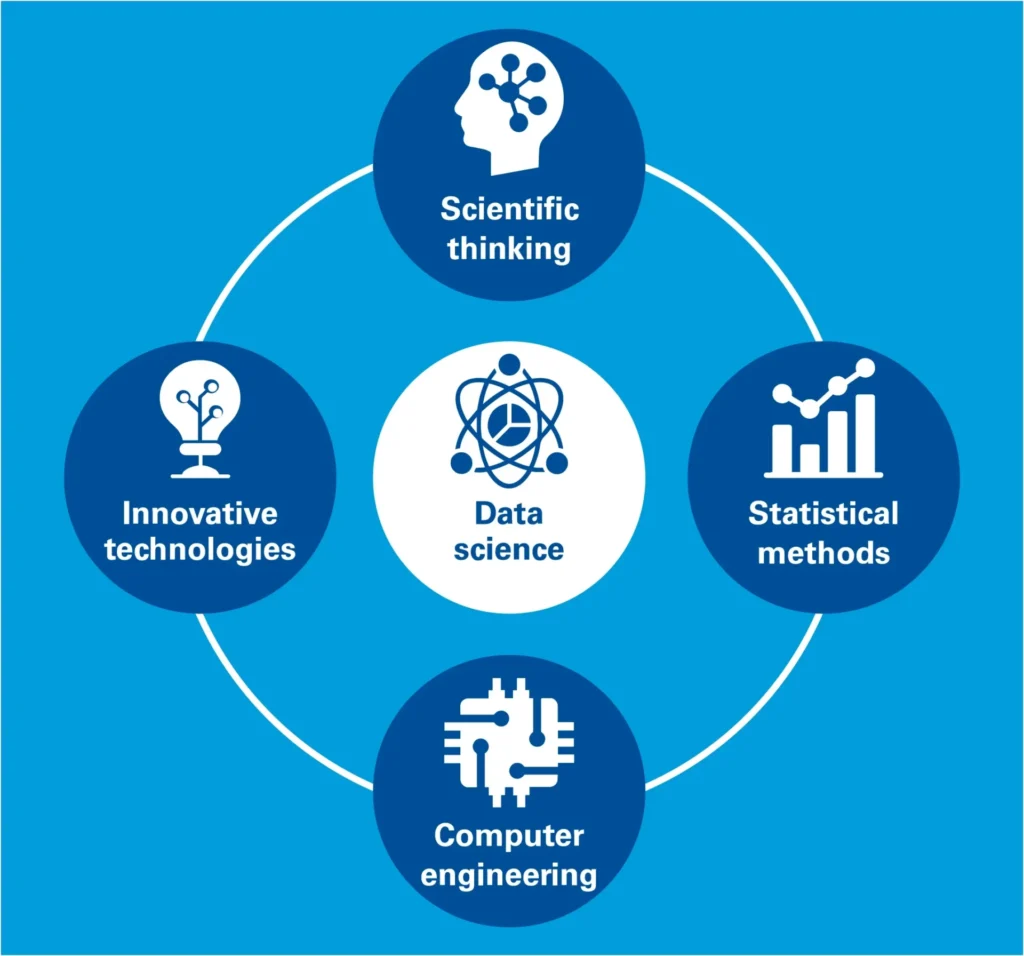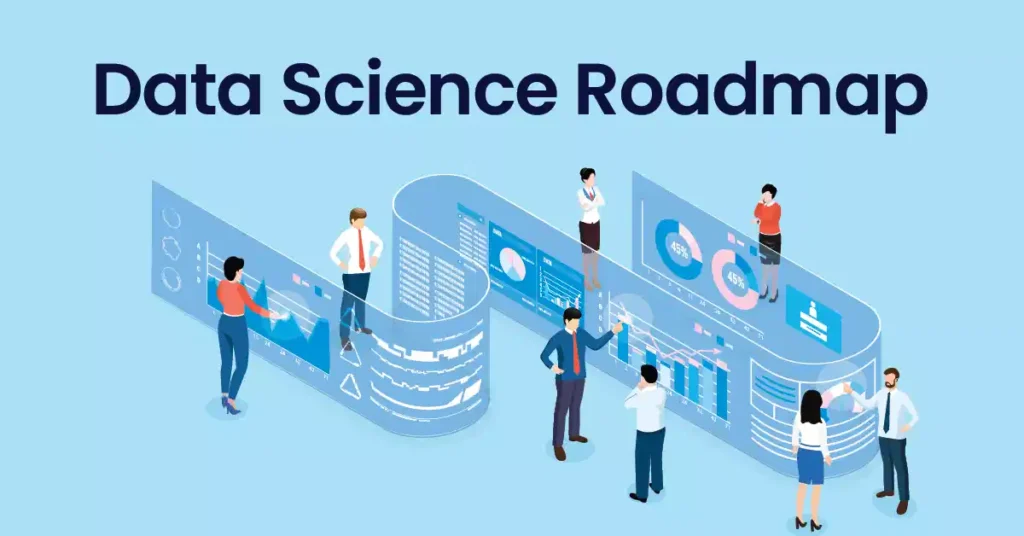In today’s data-driven world, the demand for skilled data scientists continues to grow. For beginners interested in building a rewarding career in this field, learning data science online is one of the most flexible and cost-effective ways to get started. But where do you begin? This step-by-step guide will help you navigate the complexities of online learning, offering actionable advice to make your journey efficient and effective.

Why Learn Data Science?
Data science isn’t just another buzzword—it’s the backbone of modern industries. Companies across sectors use data science to make informed decisions, predict trends, and create value. By learning this in-demand skill set, you unlock opportunities in high-paying roles, gain access to cutting-edge technologies, and become a key player in solving real-world problems.
Step 1: Understand What Data Science Is
Before diving into courses, it’s crucial to grasp the basics of data science. At its core, data science combines statistics, programming, and domain expertise to extract meaningful insights from data. Key components include:
- Data Analysis: Exploring and interpreting raw data.
- Machine Learning: Building algorithms that predict outcomes.
- Data Visualization: Presenting findings in a clear, impactful way.
- Big Data Tools: Managing and analyzing large datasets.
For beginners, this might sound overwhelming, but breaking it down step by step simplifies the process.
Step 2: Set Clear Goals and Choose Your Path
The world of data science is vast, with various specializations like machine learning, data engineering, and business analytics. Start by asking yourself:
- What excites me the most about data science?
- Am I more interested in technical roles (e.g., machine learning engineer) or analytical roles (e.g., data analyst)?
- What is my end goal—career transition, upskilling, or exploring a passion?
Your answers will determine the resources and courses you should prioritize.
Step 3: Build a Strong Foundation
To excel in data science, you need a solid grasp of the following fundamentals:
- Programming Languages: Python and R are industry standards.
- Mathematics and Statistics: Topics like linear algebra, probability, and hypothesis testing are crucial.
- Data Manipulation: Learn tools like pandas, NumPy, and SQL for working with datasets.
Step 4: Choose the Right Online Resources
The internet is filled with online courses, tutorials, and resources. However, not all are created equal. Here’s how to select the best ones:
- Comprehensive Curriculum: Look for courses covering data wrangling, machine learning, and visualization.
- Hands-On Projects: Choose platforms offering real-world datasets and projects.
- Flexibility: Opt for self-paced options if you have a busy schedule.
Top Platforms for Learning Data Science Online:
- Coursera (e.g., IBM Data Science Professional Certificate)
- edX (e.g., MicroMasters in Data Science by MIT)
- DataCamp
- Udemy
- Kaggle (for competitions and tutorials)
Step 5: Learn by Doing
Theoretical knowledge alone won’t make you a data scientist. Engage with practical projects to reinforce your learning. Start with simple tasks like cleaning a dataset or visualizing trends and gradually move to more complex problems like predictive modeling.
Continue to the next section for more advanced steps and tips on mastering data science through online learning.
Step 6: Practice with Real-World Projects
Once you’ve covered the basics, it’s time to dive into real-world data science projects. Hands-on experience is critical for reinforcing your skills and demonstrating your abilities to potential employers. Here’s how to start:
- Explore Open Datasets
Platforms like Kaggle, UCI Machine Learning Repository, and Google Dataset Search offer free datasets for practice. Choose a dataset related to your interests, such as sports, healthcare, or finance, and start analyzing it. - Solve Business Problems
Frame your projects around business questions. For example:- Predict customer churn for a subscription service.
- Analyze sales data to identify seasonal trends.
- Create a recommendation engine for e-commerce.
- Collaborate and Share
Join communities like Kaggle or GitHub to share your projects, get feedback, and learn from others. Collaboration not only sharpens your skills but also helps build a portfolio that stands out.
Step 7: Master Data Visualization
Communicating your findings effectively is just as important as deriving them. Data visualization tools allow you to translate complex data into actionable insights. Start with the following:
- Tools to Learn: Tableau, Power BI, or matplotlib and seaborn in Python.
- Skills to Develop:
- Create dashboards that highlight key metrics.
- Use color, charts, and interactivity to tell a compelling story.
- Avoid clutter—simplicity is key in visualization.
Step 8: Dive into Machine Learning
Machine learning is a cornerstone of data science. Begin with beginner-friendly concepts and gradually explore advanced topics. Follow this roadmap:
- Understand the Basics
- Supervised learning (e.g., linear regression, classification).
- Unsupervised learning (e.g., clustering, dimensionality reduction).
- Work with Libraries
Familiarize yourself with machine learning libraries like scikit-learn, TensorFlow, and PyTorch. - Build Models
Apply machine learning to solve problems like:- Predicting housing prices using historical data.
- Detecting spam emails with classification models.
Step 9: Learn About Big Data and Cloud Platforms
As datasets grow larger, traditional tools may no longer suffice. Learning big data and cloud platforms equips you to handle complex, large-scale problems.
- Big Data Tools: Apache Hadoop, Spark.
- Cloud Platforms: AWS, Google Cloud, Azure.
- Key Concepts: Distributed computing, parallel processing.
Step 10: Stay Updated and Network
The data science field evolves rapidly, with new tools and techniques emerging regularly. Here’s how to stay relevant:
- Follow Blogs and Journals
Stay informed by following resources like Towards Data Science, KDnuggets, and Medium. - Engage in Networking
Join LinkedIn groups, attend webinars, and participate in online forums to connect with professionals and keep up with industry trends. - Continue Learning
Take advanced courses or pursue certifications like AWS Certified Machine Learning or Google Professional Data Engineer.
The next section will focus on tips to build a standout portfolio, essential soft skills for data scientists, and how to land your first job in data science. Stay tuned!
Step 11: Build a Standout Portfolio
Your portfolio is your gateway to showcasing your expertise and attracting employers’ attention. A well-constructed portfolio demonstrates not just technical skills but also your problem-solving approach and creativity. Here’s how to create one:
- Select Diverse Projects
Include a variety of projects that showcase your abilities in data analysis, machine learning, visualization, and storytelling. Examples:- Exploratory Data Analysis (EDA): Analyze a public dataset and extract meaningful insights.
- Predictive Modeling: Build a machine learning model to predict outcomes like stock prices or sales trends.
- Interactive Dashboards: Use tools like Tableau or Power BI to create user-friendly dashboards.
- Document Your Work
Clearly outline each project with the following:- Objective: What problem were you solving?
- Approach: Describe your methodology, tools, and techniques.
- Outcome: Highlight key results and their potential impact.
- Host Your Portfolio Online
Use platforms like GitHub, Kaggle, or personal websites to make your portfolio accessible. Showcase not just your code but also presentations and visualizations.
Step 12: Develop Essential Soft Skills
Technical expertise alone isn’t enough in data science. Employers also look for candidates with strong soft skills. Focus on these key areas:
- Communication:
- Learn to explain complex data findings in simple terms.
- Practice creating impactful presentations and reports.
- Problem-Solving:
- Approach challenges methodically.
- Break problems into smaller, manageable parts and work systematically.
- Collaboration:
- Be open to feedback and work effectively in teams.
- Participate in group projects to hone teamwork skills.
- Adaptability:
- Stay flexible and be willing to learn new tools and methodologies as the field evolves.
Step 13: Apply for Internships and Entry-Level Roles
Gaining practical experience is essential for breaking into the field. Here’s how to start:
- Look for Internship Opportunities
Many companies offer internships in data science, allowing you to work on real-world projects under expert guidance. - Target Entry-Level Roles
Positions like “Data Analyst” or “Junior Data Scientist” are great starting points to build your career. - Leverage Networking
- Use LinkedIn to connect with professionals in your target industry.
- Attend meetups, webinars, and hackathons to expand your network.
- Tailor Your Resume
Highlight relevant skills, certifications, and projects. Use action verbs like “analyzed,” “designed,” or “optimized” to describe your achievements.
Step 14: Prepare for Data Science Interviews
Once you start applying for jobs, interview preparation becomes critical. Expect questions in these areas:
- Technical Skills:
- Programming challenges (e.g., Python, SQL).
- Statistical and machine learning concepts.
- Problem-Solving:
- Case studies or scenario-based questions.
- Behavioral Questions:
- Examples of teamwork, handling challenges, or learning from failures.
The final section will summarize key takeaways, provide additional resources, and discuss how to remain motivated throughout your learning journey.
Step 15: Key Takeaways and Maintaining Motivation
Learning data science online is a journey that requires dedication, patience, and strategic planning. Here are some final tips to ensure your success:
- Break Your Learning Into Phases
Start with foundational skills like programming and statistics, then progress to advanced topics like machine learning and big data. - Set Milestones
Divide your learning journey into achievable goals. Celebrate small wins, like completing a course or building your first project, to stay motivated. - Embrace Lifelong Learning
The field of data science is dynamic. Stay curious, explore new tools and techniques, and continuously upskill to remain competitive.
Additional Resources to Accelerate Your Learning
- Books:
- “Introduction to Statistical Learning” by Gareth James et al.
- “Python for Data Analysis” by Wes McKinney.
- Online Communities:
- Reddit (e.g., r/datascience).
- Stack Overflow for technical queries.
- Free Tutorials:
- Codecademy, Kaggle Learn, and Google AI’s free courses.
- Certifications:
- Professional certificates from Google, IBM, or AWS.
Staying Motivated
- Join a Study Group
Learning with peers keeps you accountable and provides a support system. - Visualize Your Goal
Whether it’s landing a dream job or mastering a challenging concept, keep your goal in sight. - Balance and Rest
Avoid burnout by maintaining a healthy balance between study and relaxation.

Learning data science online is one of the most rewarding investments you can make in your professional growth. With the right mindset, resources, and plan, you can transform your passion for data into a lucrative and fulfilling career. Start small, be consistent, and never stop exploring.
Remember, your journey is unique. By following this step-by-step guide, you’re already ahead of many others. Now, it’s time to take the first step toward your data science career. Good luck!



